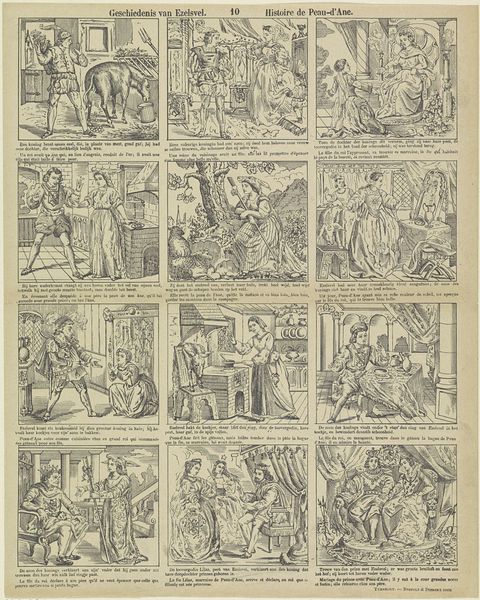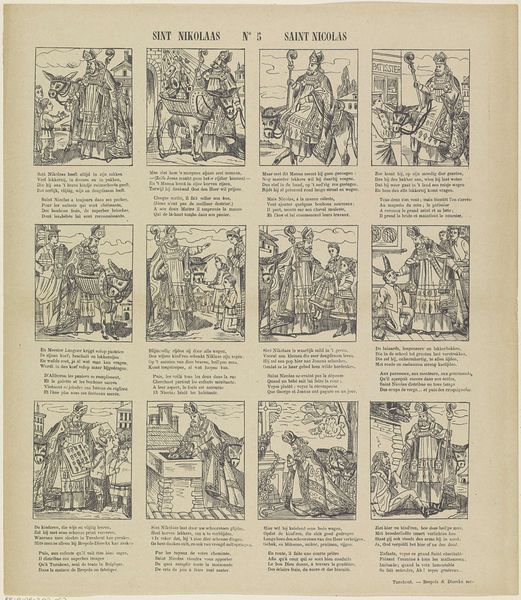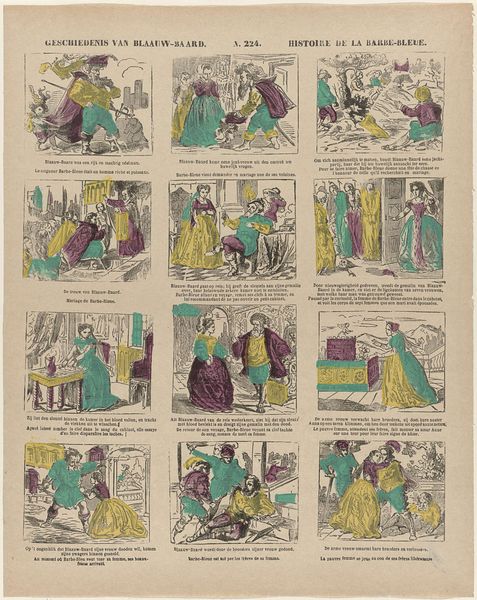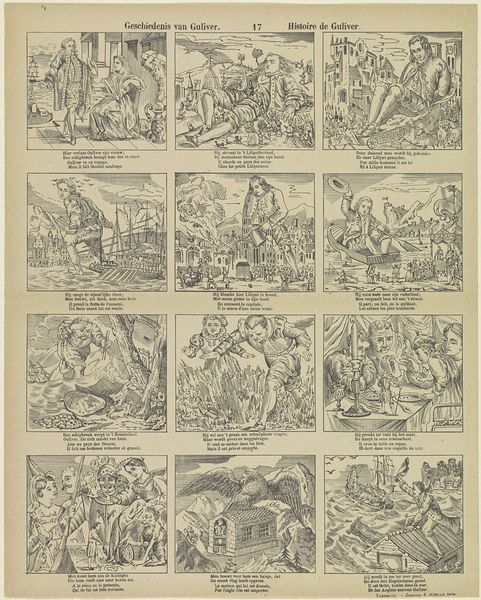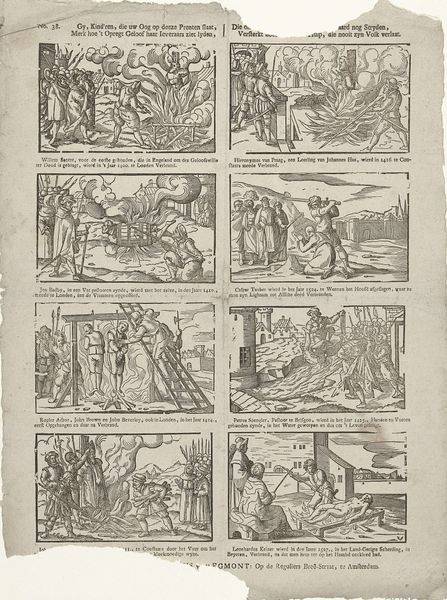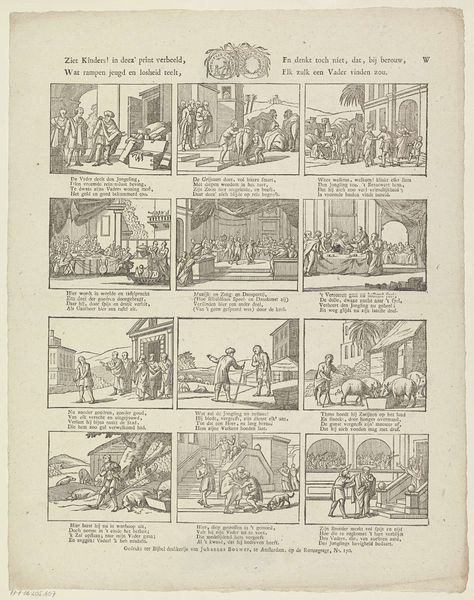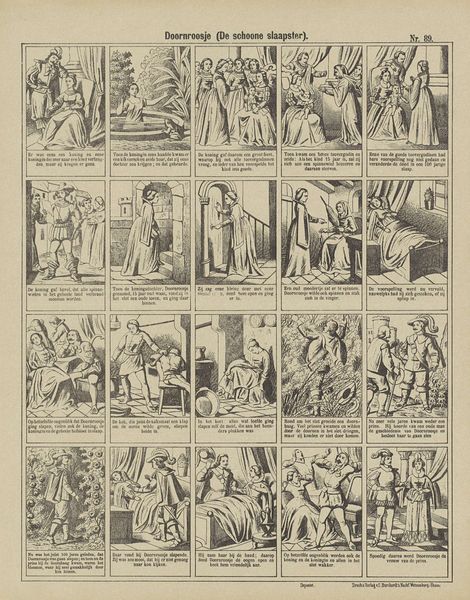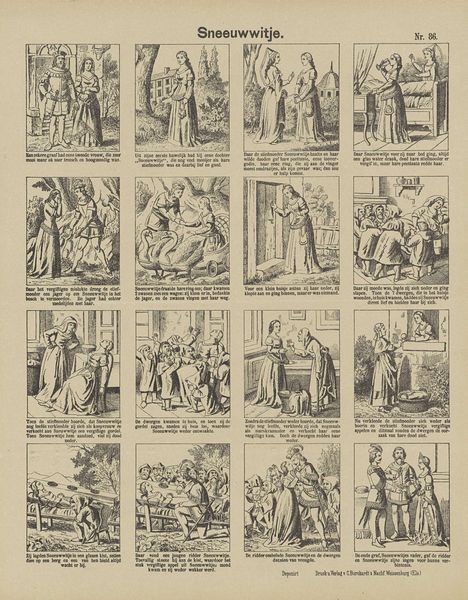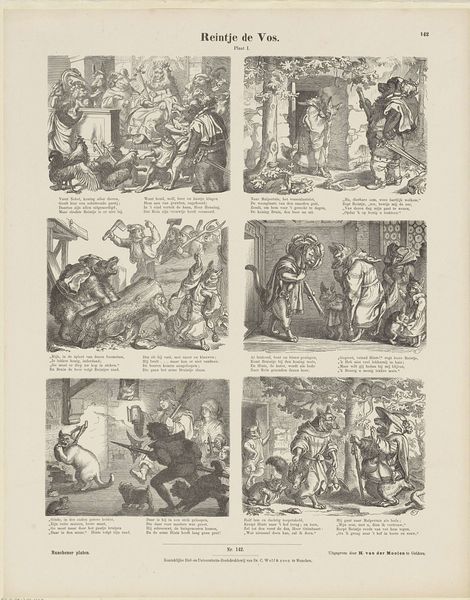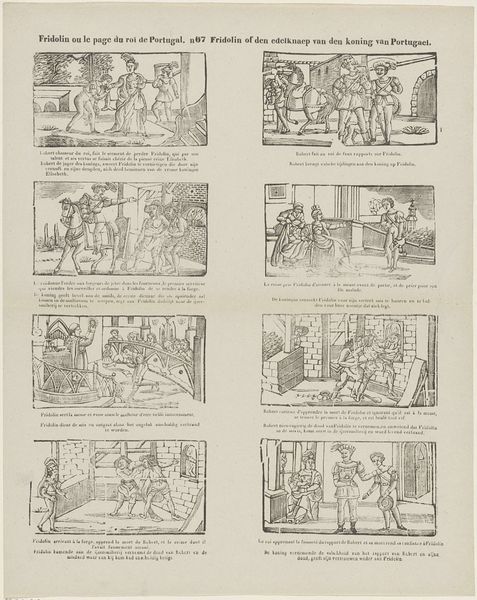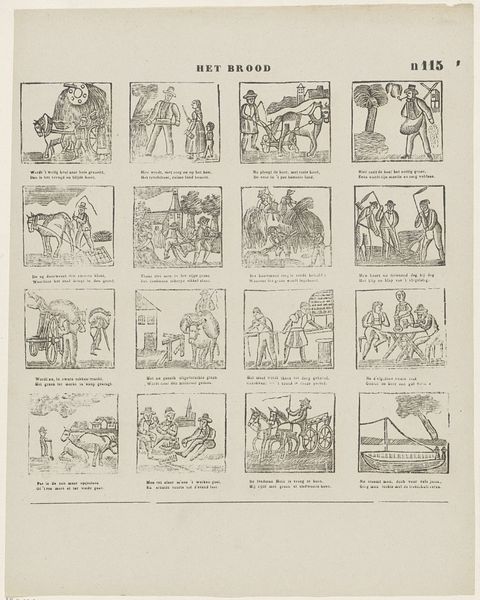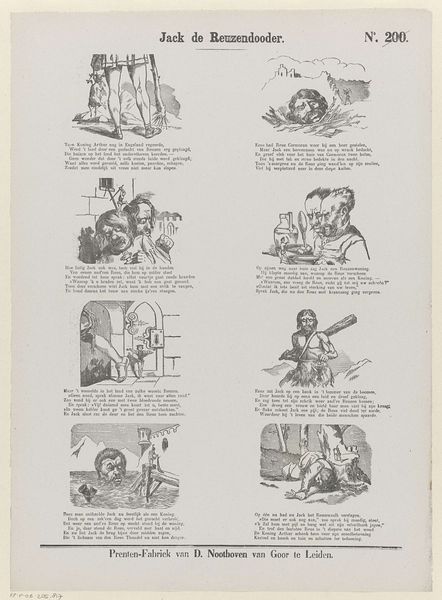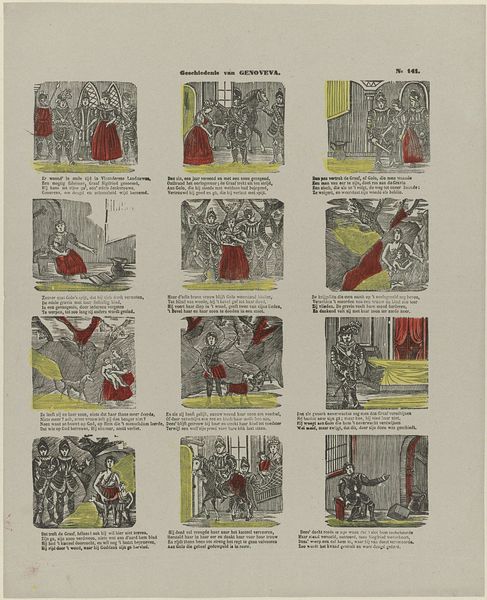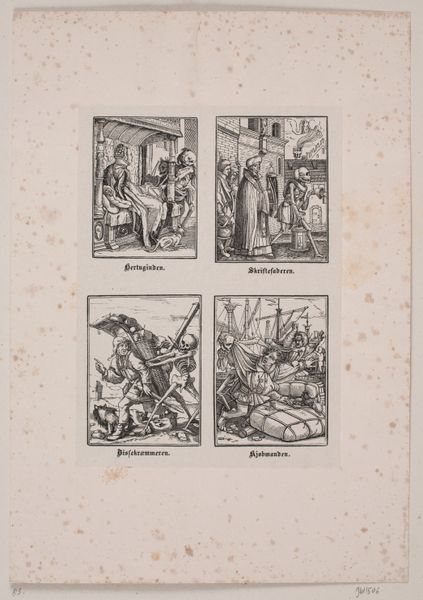
Geschiedenis van Blauwbaard / Histoire de Barbe-Bleue 1833 - 1911
0:00
0:00
Dimensions: height 375 mm, width 318 mm
Copyright: Rijks Museum: Open Domain
Curator: Here we have "Geschiedenis van Blauwbaard / Histoire de Barbe-Bleue," a print made between 1833 and 1911 by Brepols & Dierckx Zoon. Editor: It’s visually quite dense! Twelve panels, each meticulously rendered in pen and ink. The storytelling aspect is immediately striking. I get a sense of old European folk tales. Curator: Precisely. Bluebeard is a well-known folk tale. The piece reminds us of early forms of mass media, such as a cheap print telling a well-known story, widely available. The presence of text integrated within each image suggests it was made accessible to diverse literate social classes. Editor: Absolutely. It is mass-produced but someone had to carve those printing plates initially. I wonder what their shop looked like and whether Brepols and Dierckx zoon saw themselves as artists, craftsmen, or publishers of something with artistic flair. Curator: That's a fascinating question. The division of labor during this period allowed for some specialization in printmaking, where a publisher would often contract draftsmen. This way of producing printed matter became an effective vehicle for circulating folk tales like Bluebeard to the population. Editor: Note also the stark contrast in how the figures are rendered. Bluebeard, often central in the panels, has more details. It draws me to consider the labor put into those specific depictions. Does it signal their economic values relative to that of his murdered wives and serving classes? Curator: Possibly. It is crucial to examine what purpose these prints served beyond simple entertainment, whether that was reinforcing morality tales or even establishing some sort of civic identity within this very visual medium of instruction. Editor: Looking closer at the final panel, that rescue moment carries some powerful gestures with it. Despite it being a printed edition, I still get a sense of how labor intensive creating prints such as these are and it makes me wonder, were any women employed to produce these printed works, telling a woman's folk story? Curator: An astute observation! It pushes us to broaden our ideas surrounding folk stories and visual print, to the stories behind its physical manufacture.
Comments
No comments
Be the first to comment and join the conversation on the ultimate creative platform.
